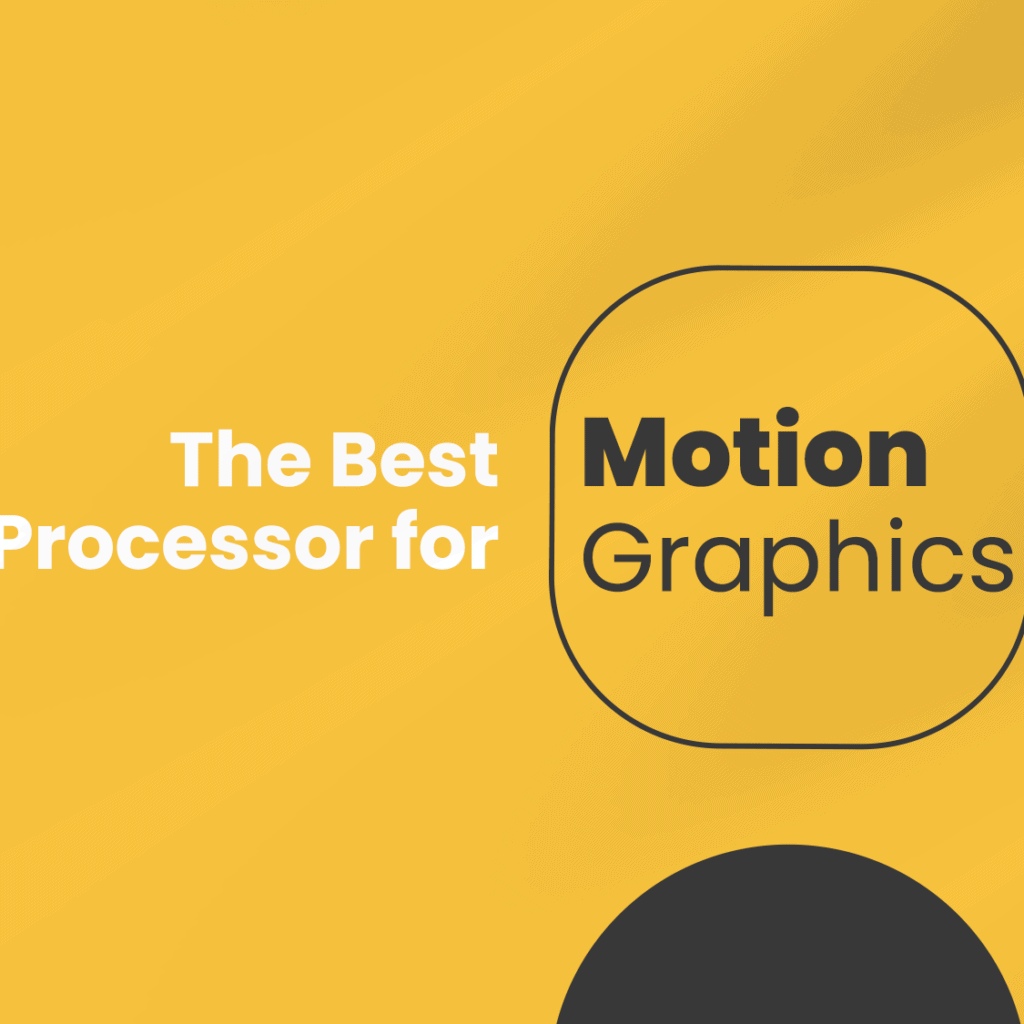
What Is the Best Processor for Motion Graphics? A Comprehensive Guide
In the ever-evolving world of motion graphics, the role of hardware, particularly the processor, cannot be overstated. The choice of a processor can significantly impact the performance of motion graphics tasks, influencing rendering times, real-time previews, and overall workflow efficiency. In this comprehensive guide, we will delve into the key considerations for selecting the ideal processor for motion graphics, exploring the technical aspects, recommended specifications, and how advancements in processor technology contribute to enhancing the motion design experience.
If you’re in need of top-notch motion graphics services, look no further. Visit this page to explore the services we offer at Smart Media.
Understanding the Importance of the Processor
The processor, often referred to as the CPU (Central Processing Unit), serves as the brain of your computer. Its role in motion graphics is crucial as it handles complex calculations, data processing, and task execution. A powerful processor is essential for smoothly running graphic design applications, especially those involving intricate animations, 3D rendering, and simulations.
Technical Considerations
Clock Speed:
The clock speed, measured in gigahertz (GHz), indicates how fast a processor can execute instructions. For motion graphics, a higher clock speed is generally beneficial, as it allows for quicker rendering and smoother real-time previews.
Cores and Threads:
Multi-core processors are common in today’s market, with options ranging from dual-core to octa-core and beyond. Additionally, processors may support multithreading, effectively doubling the number of available threads. Motion graphics applications can benefit from multiple cores, especially when handling parallel tasks during rendering.
Cache Size:
The cache is a small, high-speed memory within the processor that stores frequently accessed data. A larger cache can improve performance, particularly in tasks that involve repetitive calculations, such as rendering frames in motion graphics projects.
Architecture:
Processor architecture, such as Intel’s Core or AMD’s Ryzen series, plays a significant role in performance. Newer architectures often introduce improvements in efficiency, speed, and overall processing power.
Recommended Processors for Motion Graphics
Intel Core i9-11900K:
– Clock Speed: Up to 5.3 GHz
– Cores/Threads: 8/16
– Cache: 16 MB
– Architecture: 11th Gen Intel Core
AMD Ryzen 9 5900X:
– Clock Speed: Up to 4.8 GHz
– Cores/Threads: 12/24
– Cache: 70 MB
– Architecture: Zen 3
Intel Core i7-12700K:
– Clock Speed: Up to 5.0 GHz
– Cores/Threads: 12/20
– Cache: 30 MB
– Architecture: 12th Gen Intel Core
Factors Influencing Processor Choice
Software Compatibility:
Different motion graphics software may have varying levels of optimization for specific processors. Check the software’s recommended specifications for the best compatibility.
Budget Constraints:
High-end processors often come with a hefty price tag. Consider your budget and weigh the performance benefits against the cost.
Future-Proofing:
Investing in a processor with a balance of power and future-proofing features ensures your system remains capable of handling upcoming advancements in motion graphics technology.
Multitasking Needs:
If your workflow involves multitasking, such as running multiple design applications simultaneously, a processor with more cores and threads can enhance multitasking efficiency.
Advancements in Processor Technology
AI Integration:
Some modern processors integrate AI technologies to enhance performance in specific tasks. AI-driven features can optimize rendering times and improve overall efficiency.
Improved Power Efficiency:
Advancements in manufacturing processes contribute to processors that deliver better performance while maintaining or even reducing power consumption.
Conclusion
In the quest for the ideal processor for motion graphics, a careful consideration of technical specifications, software compatibility, budget, and future needs is paramount. The recommended processors mentioned serve as a starting point, but it’s essential to stay informed about the latest developments in processor technology.
Ultimately, the ideal processor is one that aligns with your specific motion graphics requirements, providing the necessary power and efficiency to bring your creative visions to life. As technology continues to advance, the right processor can be a game-changer, unlocking new possibilities and enhancing your motion design experience.


